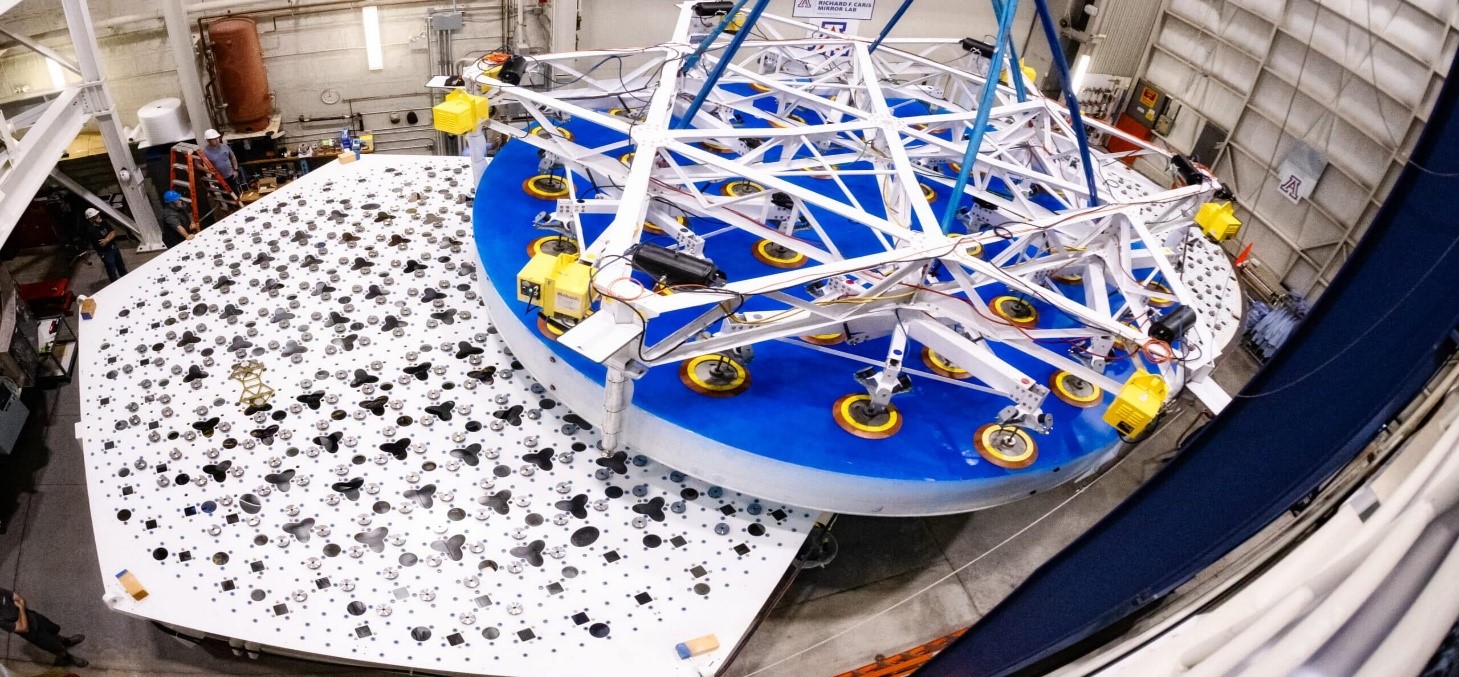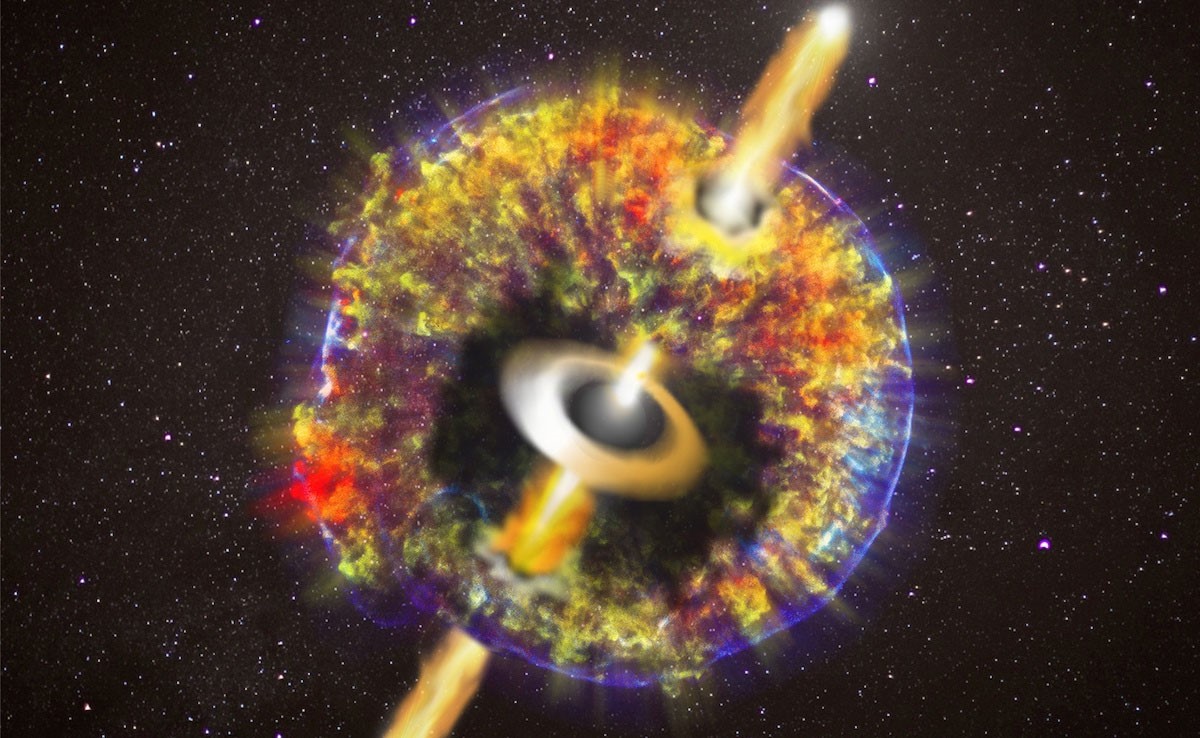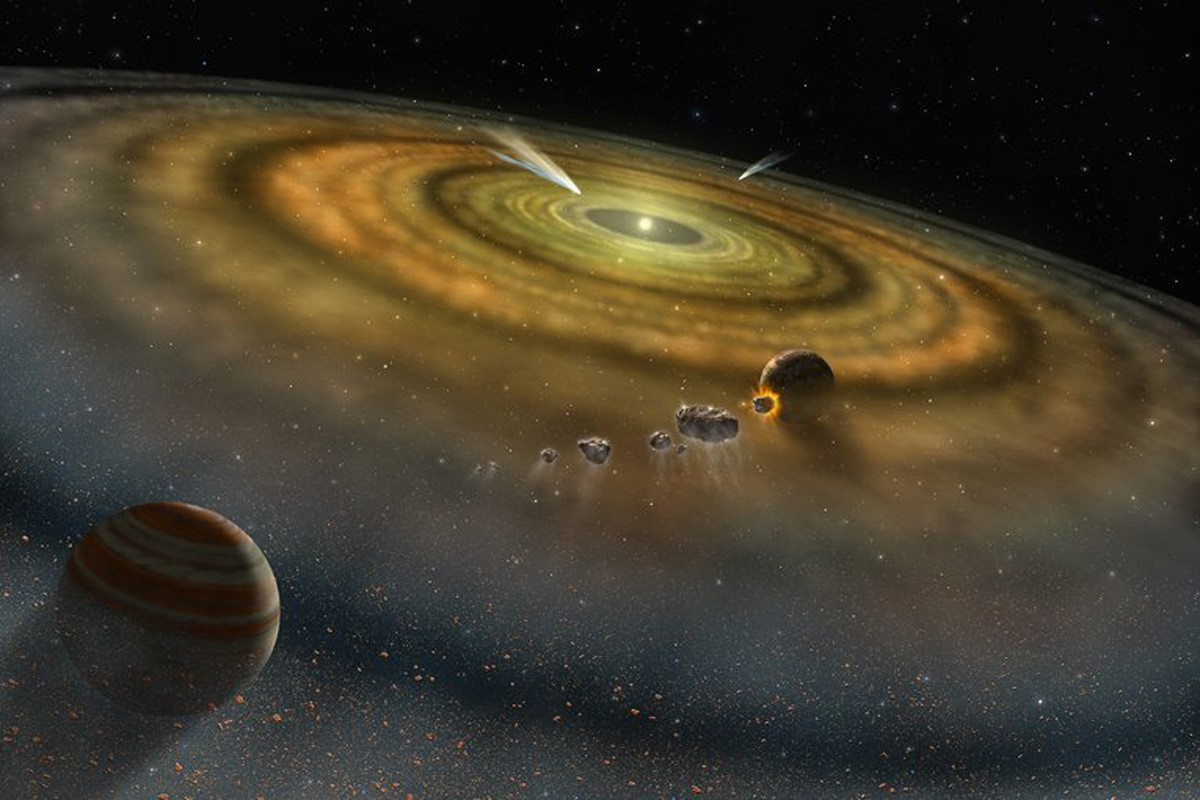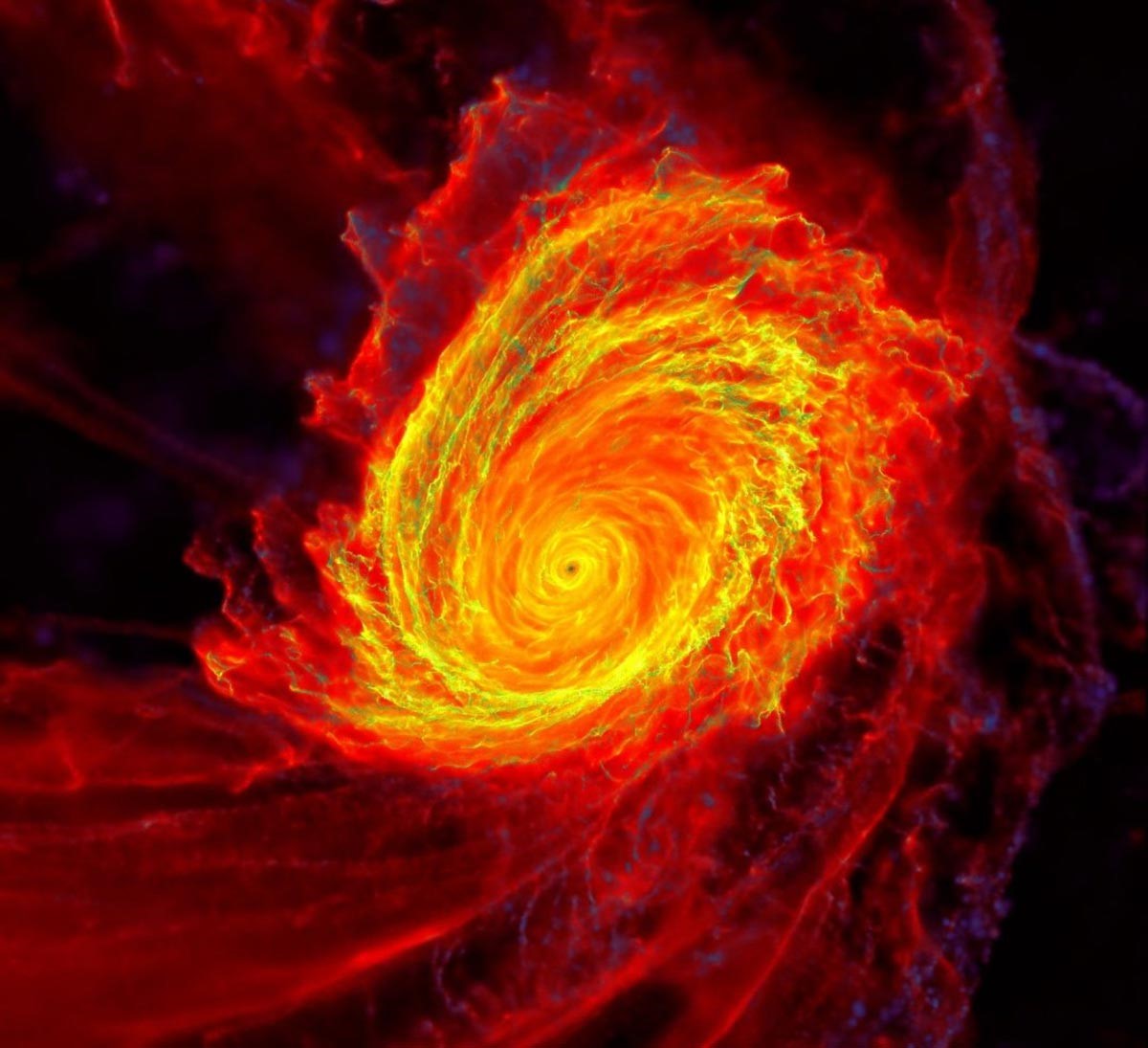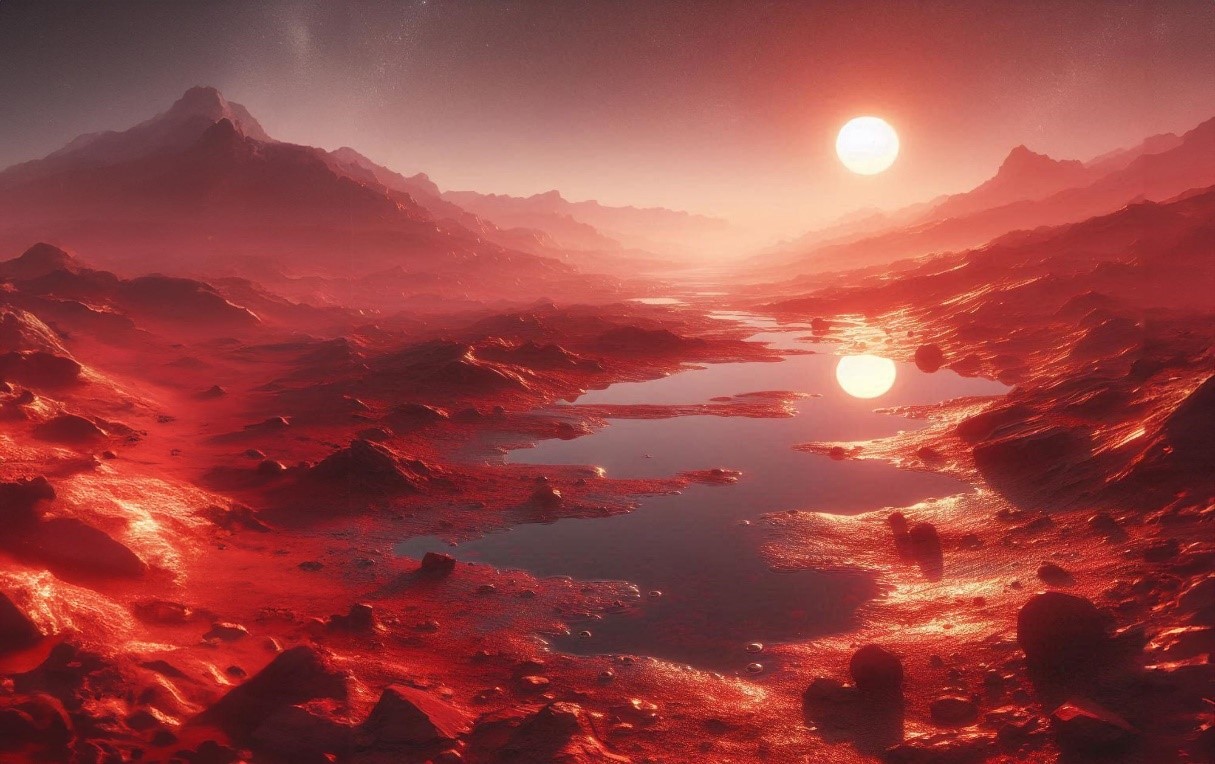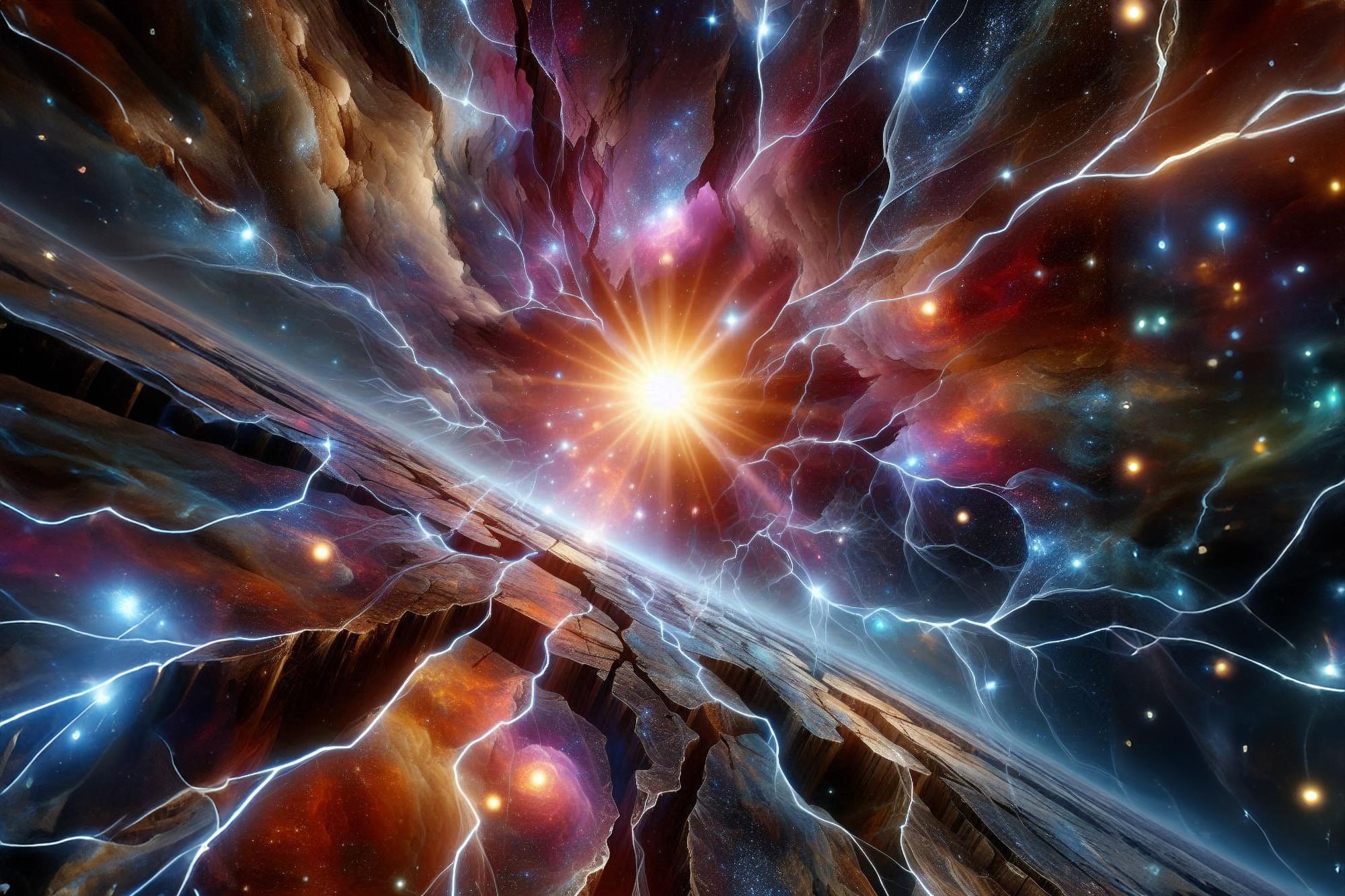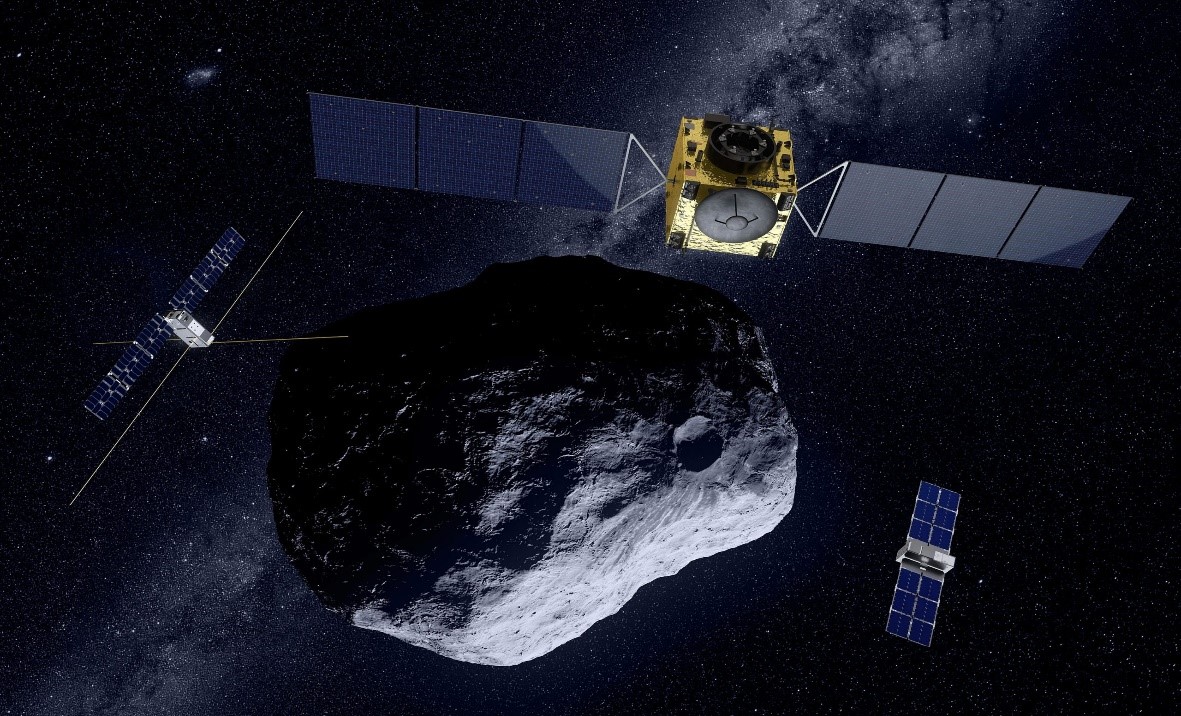Physicists Identify First 'Black Hole Triple'
Many previously detected black holes are part of binary systems, consisting of a black hole and a secondary object (such as a star, neutron star, or another black hole) that orbit each other due to the black hole’s gravity. However, a recent discovery is broadening our understanding of black holes and their formation. In a study published in Nature, physicists from MIT and Caltech report observing a "black hole triple" for the first time. This system features a central black hole consuming a small star that spirals in every 6.5 days, similar to binary systems. Surprisingly, a second star is orbiting the black hole at a much greater distance, with an orbital period of around 70,000 years.

Figure 1. Physicists Uncover First 'Black Hole Triple' System
The discovery that a black hole appears to have a gravitational hold on a distant object is prompting questions about its formation. Traditionally, black holes are believed to form from a violent supernova explosion when a dying star collapses, releasing vast amounts of energy. However, this new system challenges that theory. If the black hole had formed through a typical supernova, the explosion would have expelled any loosely bound objects, meaning the distant star wouldn't remain in orbit. Instead, the team proposes that the black hole may have formed through a gentler process called "direct collapse," where a star implodes without the explosive burst, allowing nearby objects to remain undisturbed. This discovery could provide the first evidence of a black hole formed via this quieter, more gradual process, expanding our understanding of black hole origins. Figure 1 shows Physicists Uncover First 'Black Hole Triple' System.
“We think most black holes form from violent explosions of stars, but this discovery challenges that idea,” says Kevin Burdge, a Pappalardo Fellow in the MIT Department of Physics and lead author of the study. “This system is super exciting for black hole evolution, and it also raises questions about whether there are more triple systems out there.”
The study’s co-authors from MIT include Erin Kara, Claude Canizares, Deepto Chakrabarty, Anna Frebel, Sarah Millholland, Saul Rappaport, Rob Simcoe, and Andrew Vanderburg, with Kareem El-Badry from Caltech.
Simultaneous Movement
The discovery of the black hole triple was largely incidental. The physicists stumbled upon it while using Aladin Lite, an astronomical tool that compiles data from various telescopes across the world and space. The tool allows astronomers to search for images of the same region in the sky, captured by telescopes tuned to different wavelengths.
The team had been investigating potential new black holes within the Milky Way galaxy. Burdge, intrigued, examined an image of V404 Cygni, a well-known black hole about 8,000 light-years from Earth, first confirmed as a black hole in 1992. Although V404 Cygni had been studied extensively, no one had previously observed what Burdge and his team did.
In the optical images, Burdge noticed two distinct blobs of light close to each other. The first blob was identified as the black hole and a closely orbiting star, which sheds material onto the black hole, generating visible light. The second, more distant blob of light, however, had not been studied before. Burdge determined it likely came from a star located far away from the black hole.
“The fact that we can see two separate stars over this much distance suggests they are incredibly far apart,” says Burdge, who calculated the outer star’s distance to be 3,500 astronomical units (AU) from the black hole. This is 3,500 times farther than the Earth’s distance from the Sun, or 100 times the distance between Pluto and the Sun.
The next question was whether the distant star was gravitationally bound to the black hole and its inner companion. To answer this, the researchers analyzed Gaia data, which tracks stellar movements with high precision. After reviewing a decade's worth of data, they found that the inner and outer stars moved in perfect tandem, a rare occurrence. The probability of this synchronized motion happening by chance is about one in 10 million.
“It’s almost certainly not a coincidence or accident,” Burdge states. “We’re seeing two stars that are following each other because they’re attached by this weak string of gravity. This must be a triple system.”
Tugging On Threads
How could this system have formed? If the black hole originated from a typical supernova, the violent explosion would have likely displaced the outer star long ago.
“Imagine pulling a kite with a weak string, like a spider web,” says Burdge. “If you pulled too hard, the web would snap, and the kite would fly away. Gravity works similarly, as a weak, loosely bound force. If anything dramatic happened to the inner binary, the outer star would be lost.”
To test this hypothesis, Burdge ran simulations to examine how such a triple system could have evolved while keeping the outer star intact.
In each simulation, he started with three stars (with the black hole as one of them before its formation) and ran tens of thousands of scenarios, each with a different possible path for how the third star could collapse into a black hole and affect the motions of the other two. He simulated both supernovae, where energy and material are expelled, and direct collapse scenarios, where a star simply implodes to form a black hole without energy release.
“The vast majority of simulations showed that direct collapse was the most likely way this triple system could have formed,” Burdge explains.
The outer star also provided insights into the system’s age. The star is transitioning into a red giant, a phase that marks the end of a star’s life. Based on this, the team estimated that the outer star—and by extension, the entire system—is approximately 4 billion years old. Since neighboring stars are typically born around the same time, the researchers concluded that the black hole triple system is also around 4 billion years old.
“This is the first time we've been able to do this with an old black hole,” Burdge adds. “Now, we know that V404 Cygni is part of a triple system, likely formed from direct collapse, and is about 4 billion years old thanks to this discovery.”
Source: MIT News
Cite this article:
Janani R (2024), Physicists Identify First 'Black Hole Triple', AnaTechMaz, pp. 125


